
Machu Picchu, Cruise around Cape Horn, and Iguassu Falls
Mike and Judy Henderson
January 31 to March 1, 2017
I'm going to leave the map at the beginning of each page to help you visualize where we are.

++++++++++++++++++++++++++++++++++++++++++++++++
2/9/2017 (Thursday) Today we docked at Coquimbo. Coquimbo is the port area serving the greater La Serena area, which includes the city of La Serena. The area is fairly dry - not as dry as Iquique, but it certainly does not receive enough rain for agriculture. It depends on water from the Andes mountains, especially the Elqui Valley, which is watered by the Elqui River, and is a major wine grape growing region in Chile. One of the major products of the valley is Pisco liquor which, like brandy, is distilled from grape wine.
Here's the port area.
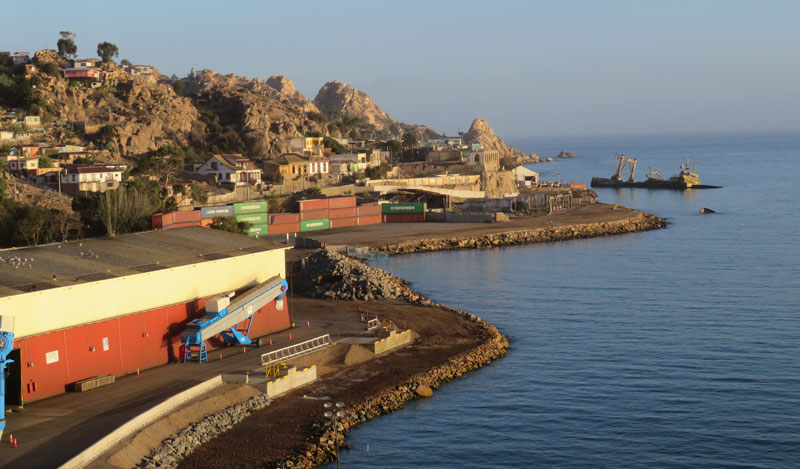
We took a bus tour of the Elqui valley, with a stop at a Pisco distillery. This vineyard was typical, and just like in California, there were lots and lots of vineyards.

The road we're on is "The Avenue of the Stars" because there is at least one celestial observatory in the hills off this road. Here's one. This is probably La Silla Observatory.
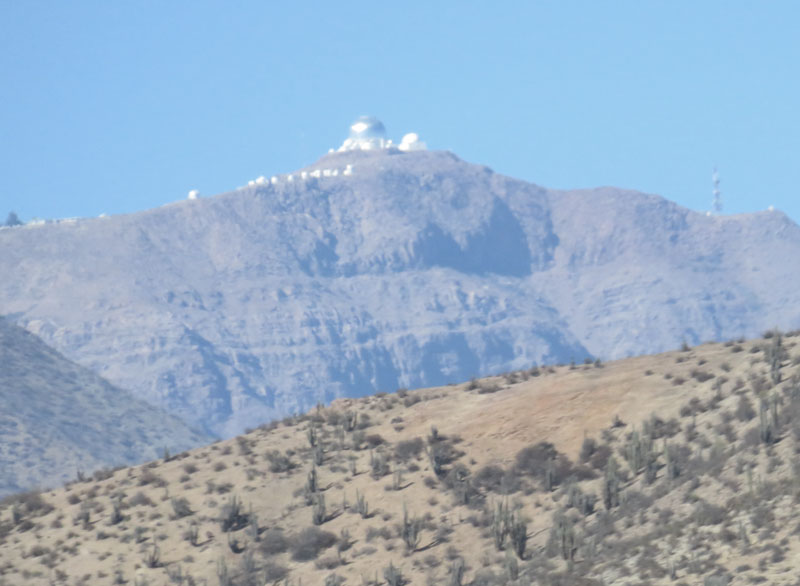
Water is so critical to the survival of the vineyards that they have dammed the Elqui river (the Puclaro Dam) and created a very large lake. Here's a view of the dam.
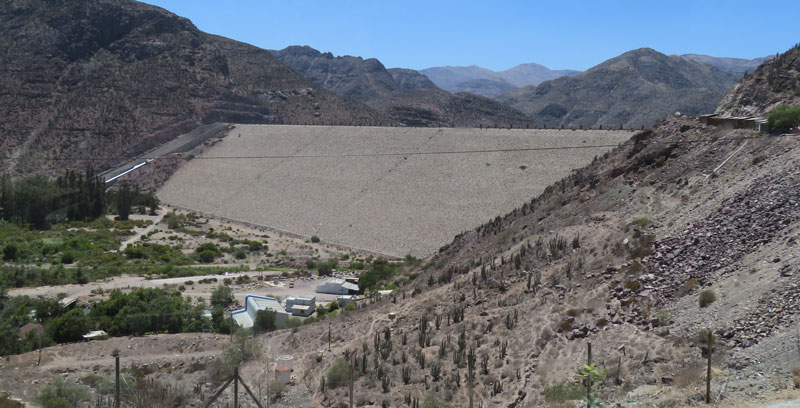
And just a very small part of the lake behind the dam. There's a lot of water in the lake.
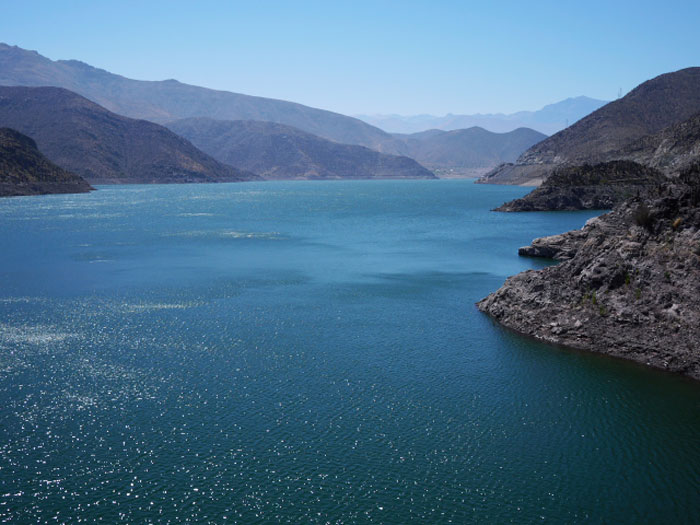
Eventually, we arrived at the distillery and took the tour.

There were some demonstration grapes growing in the area to show what was used in the making of Pisco.
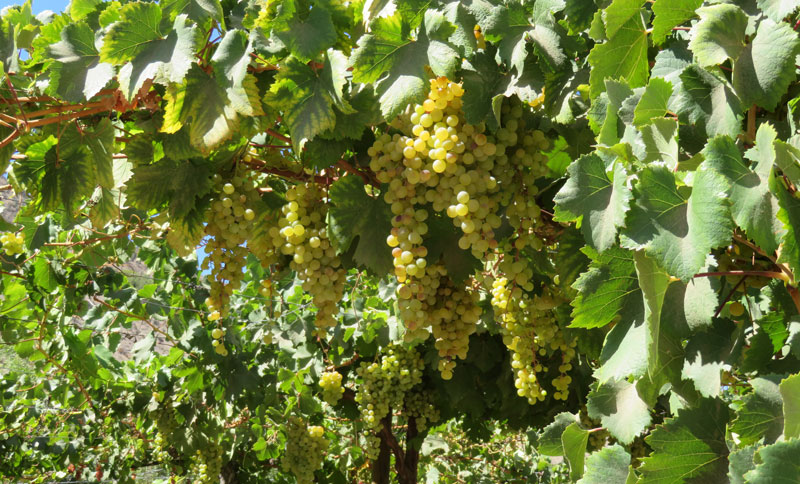
Here's a panoramic view of the distillery.

The next few pictures show the inside of the distillery. It was not operating because the harvest has not been finished. These tanks were used to ferment the grape juice into wine.
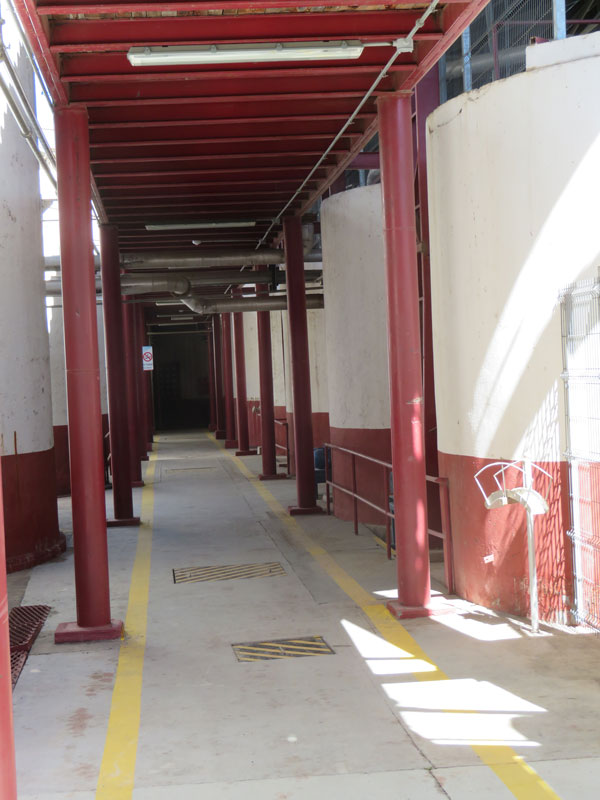
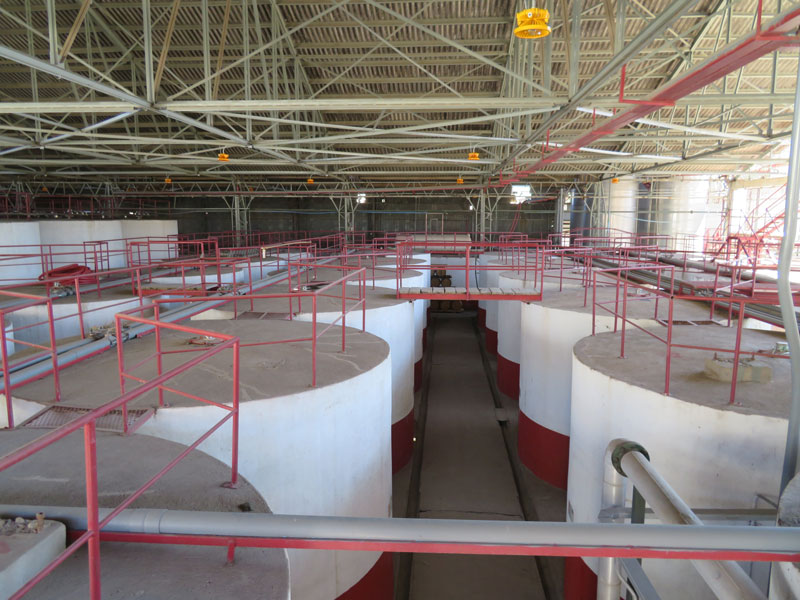
They distill the wine into Pisco liquor in these units.
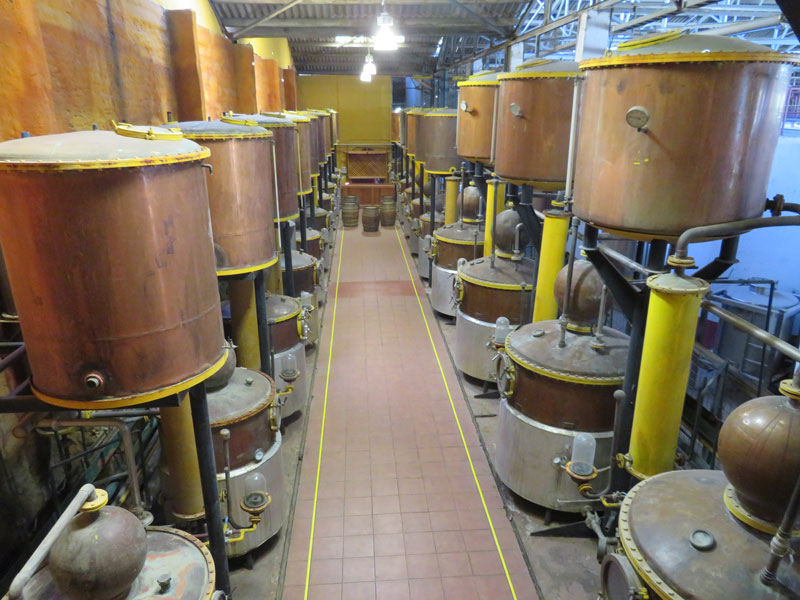
After the wine is distilled, it is aged, either in these large barrels or in the smaller ones shown later. I've toured wineries in the United States and I was struck by how dusty this facility was. Perhaps it's because of the lack of rain and the fact the the facility is not fully closed and climate controlled.
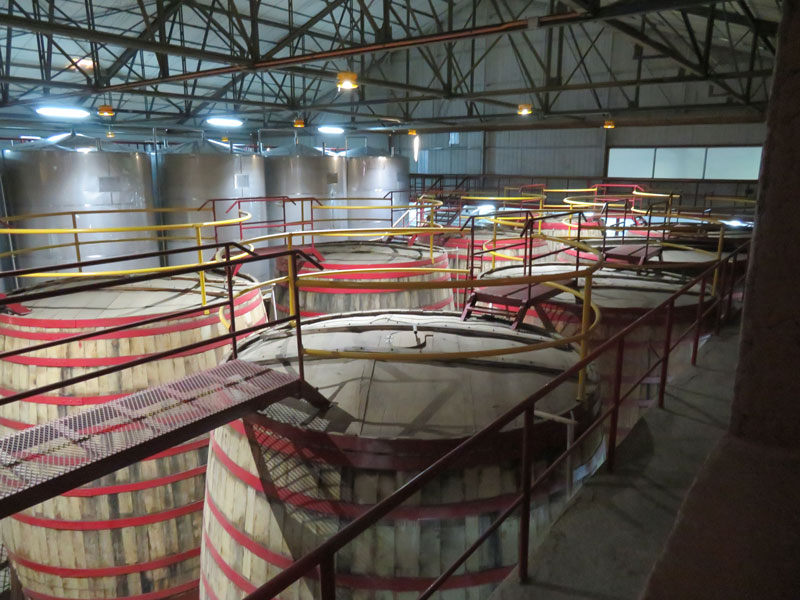
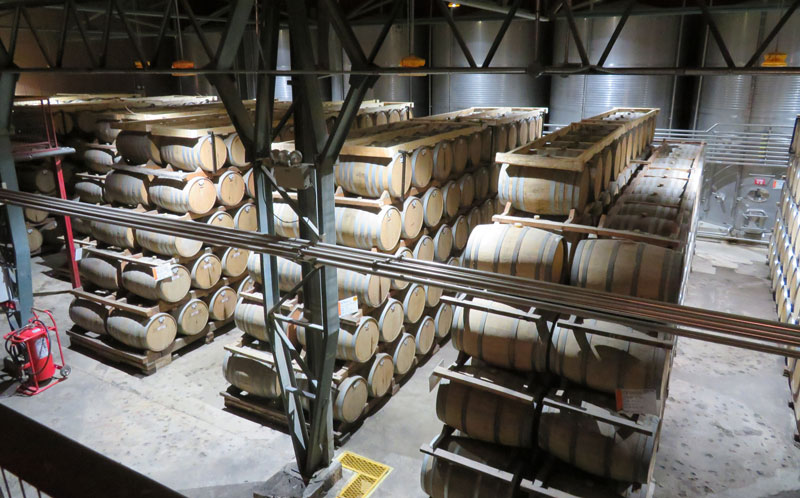
The result of this process produces the Pisco liquor, some of which is on sale here. The prices you see are in US dollars. Note that the two bottles in the center are priced at $10 each, which I thought was not bad. But we didn't buy any because we'd have to transport the bottles for the rest of our trip.
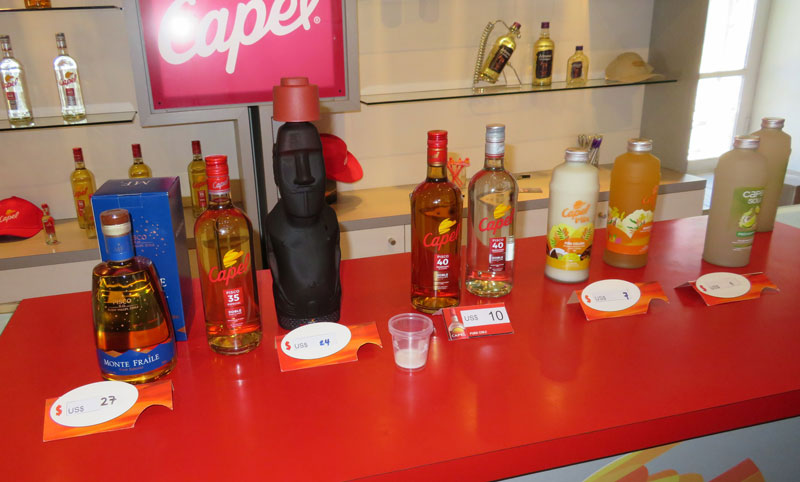
After leaving the distillery, we went to a hotel restaurant for lunch.
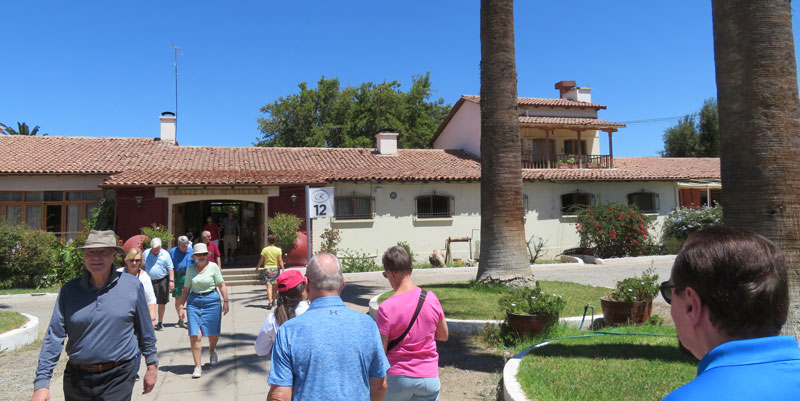
This was our chance to taste a Pisco sour, a very popular drink in Chile and Peru.
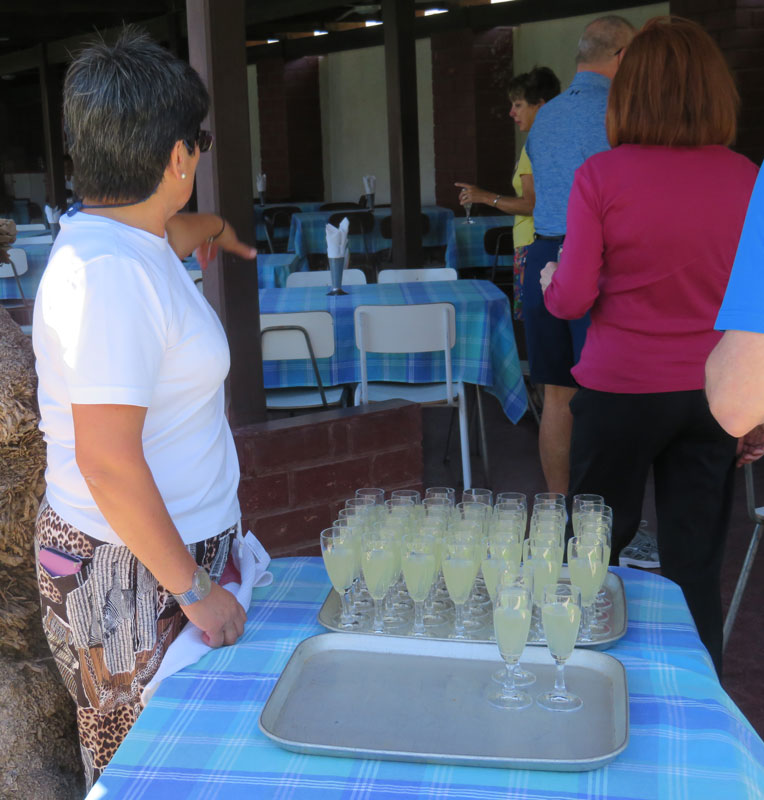
Lunch consisted of two empanadas, a skewer of chicken, and a cup of fruit. It was quite good.
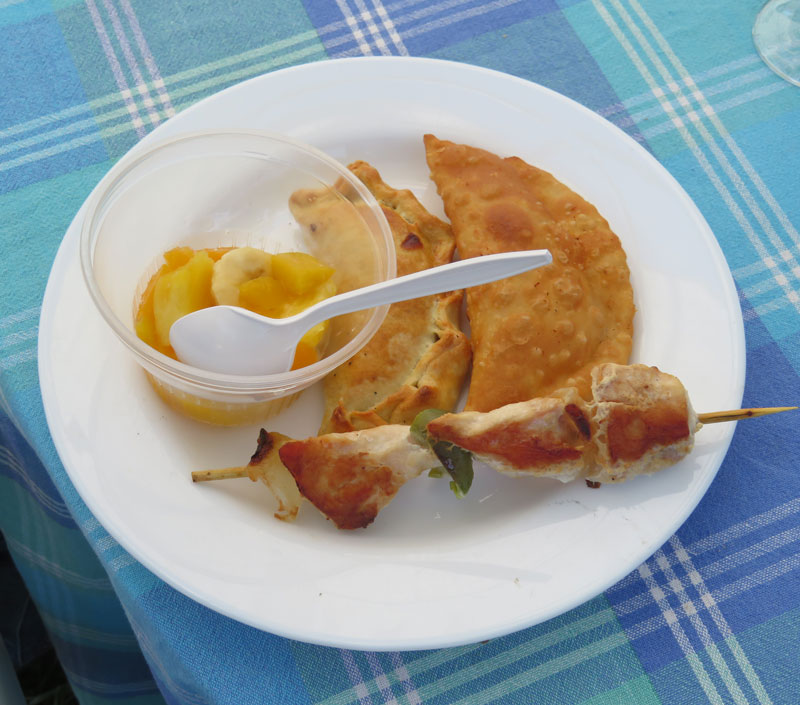
We ate outdoors in a patio area.
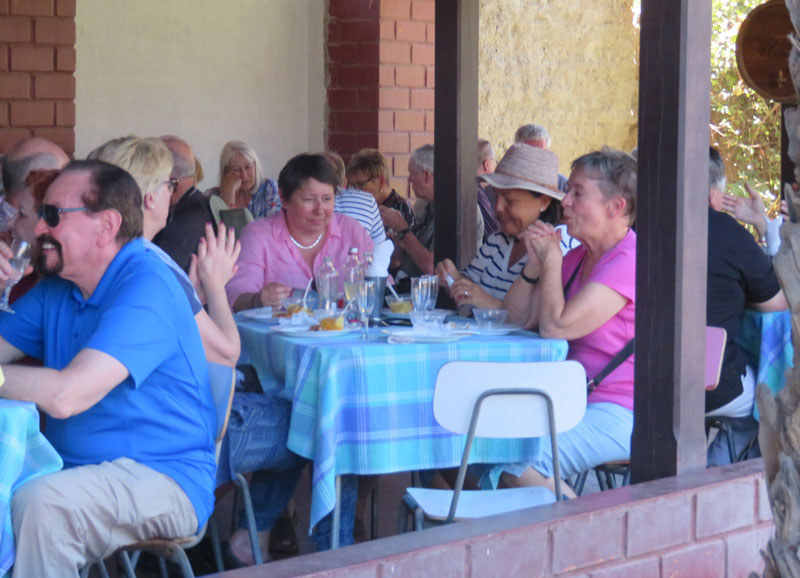
Our return trip to the port was slow because of traffic. Our guide told us that it was market day in addition to the traffic of people going to the beach.
After boarding our ship, we saw a harbor tour boat, made to look like an old pirate boat, sailing close to our ship.
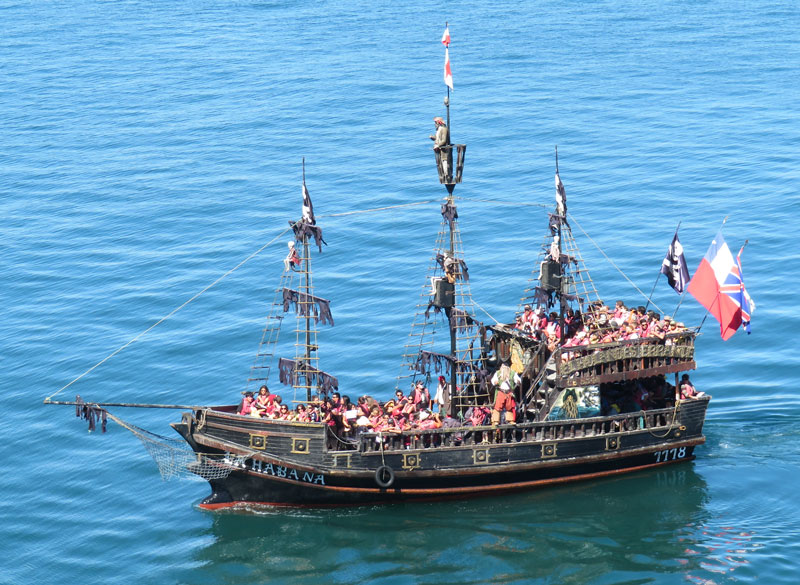
And we also saw young people diving from the shore into the harbor water. While you might not consider that unusual, the water here is COLD, part of the Humboldt current.
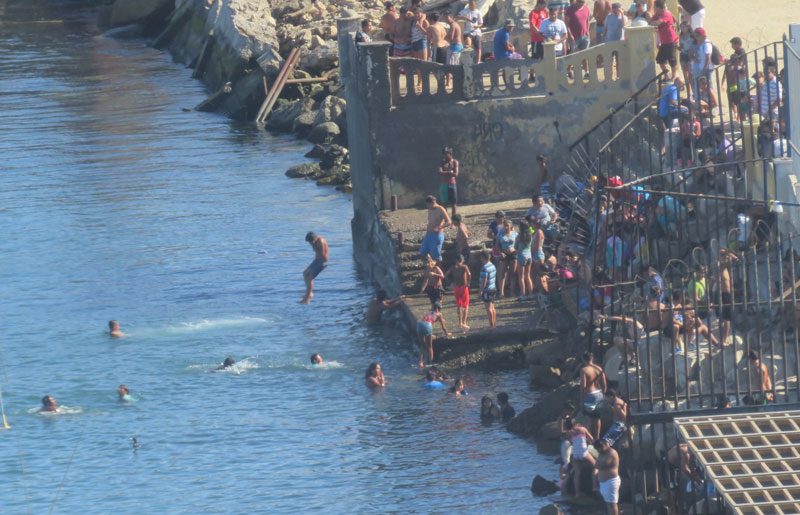
This evening, we had dinner with Vern and Mish, our neighbors in the next stateroom. They're from Ontario, Canada.
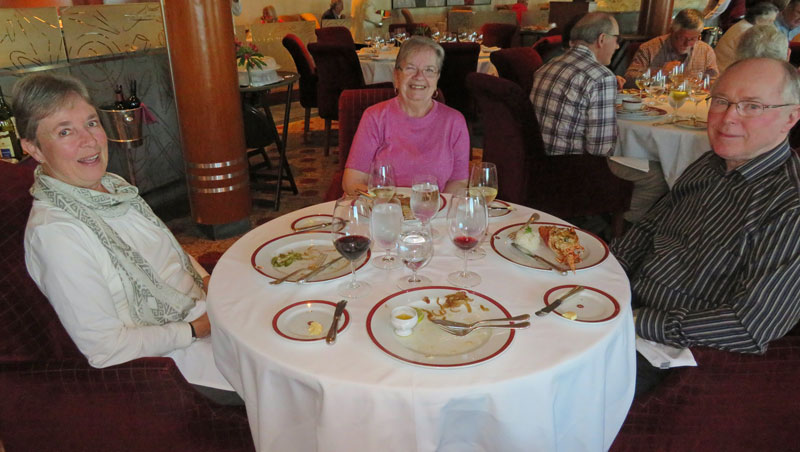
+++++++++++++++++++++++++++++++++++++++++++++++++++++
2/10/2017 (Friday) We arrived in Valparaiso this morning while it was still dark.
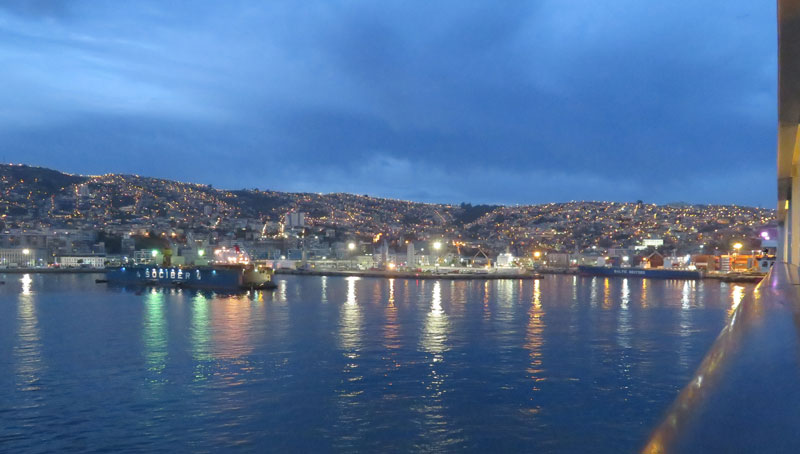
And we witnessed a magnificent sunrise.
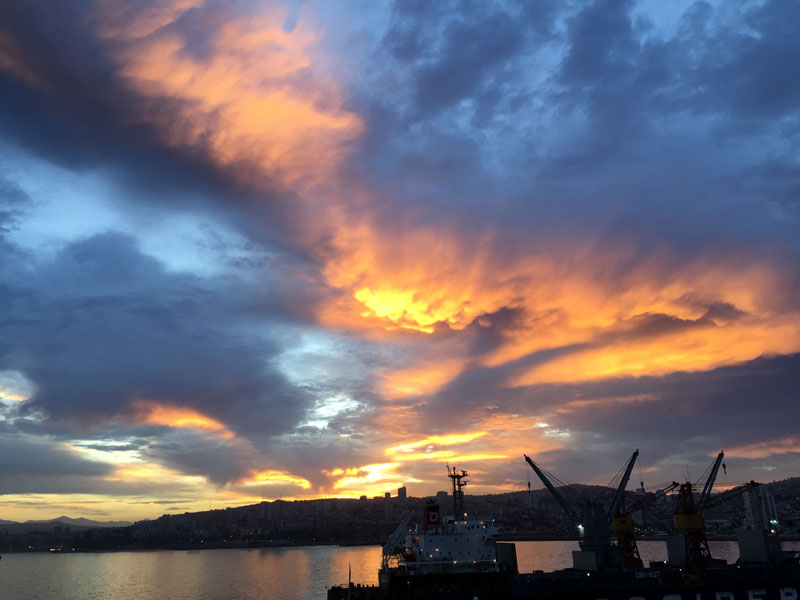
We took a tour of the city. Here we are with some friends waiting to leave on the tour.

They showed us some of the government buildings, this one housing the offices of the Senate.
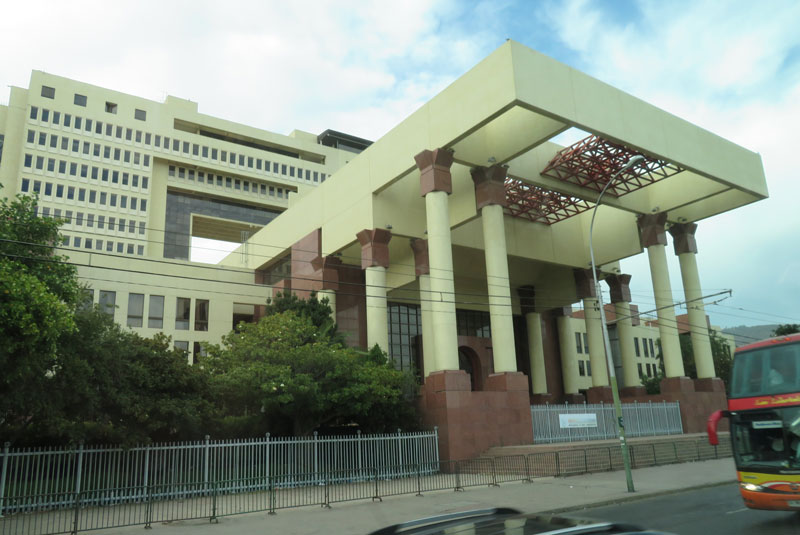
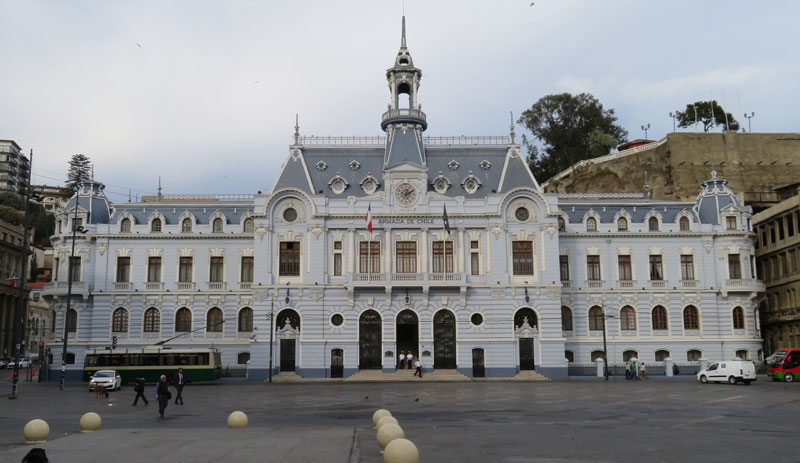
But then we got to ride one of the Funiculars. There used to be about 25 funiculars in Valparaiso but now there are only about eight still working. We rode two and both were pretty creaky. This one is the Artilleria Funicular.
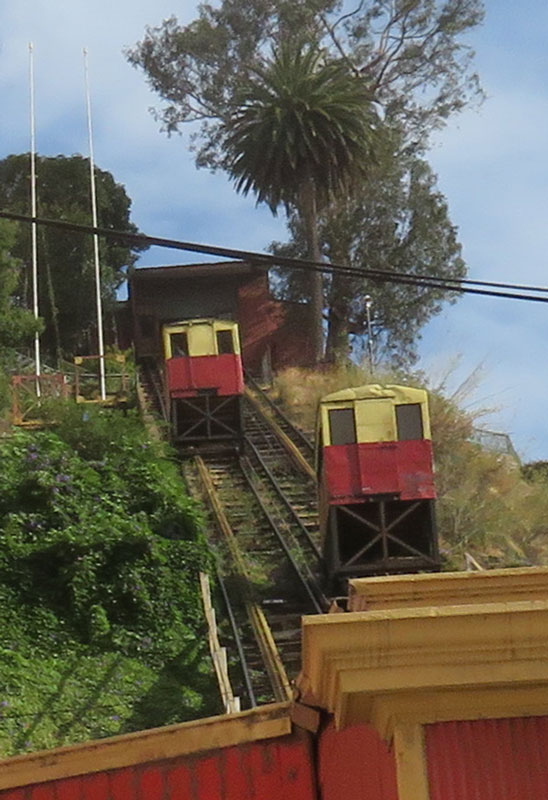
Here's Judy entering the car. I think they allowed about twelve people in at one time.
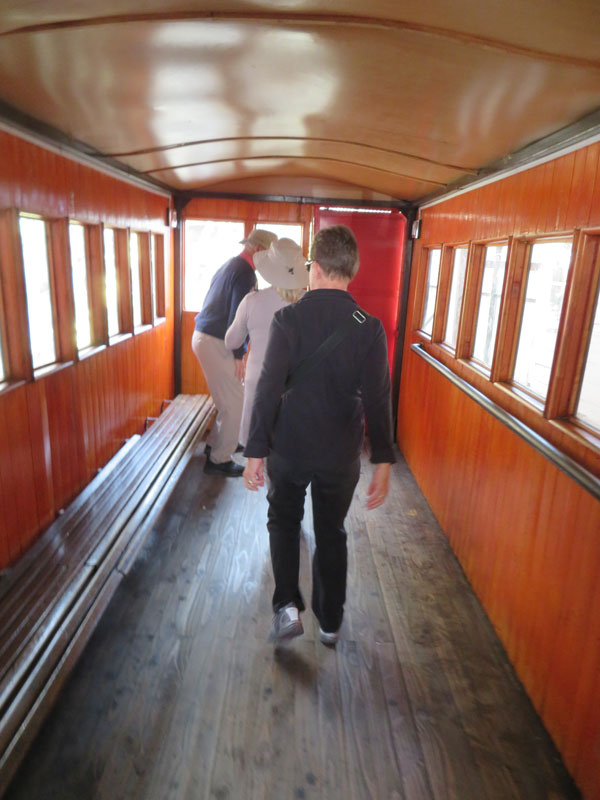
Looking up the tracks.
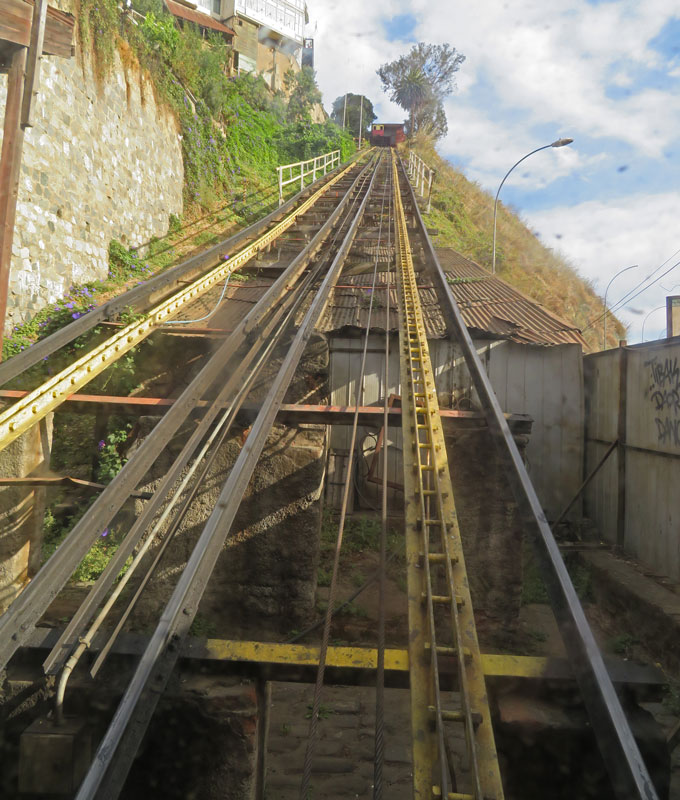
A view of the funicular from the top (taken from the web).
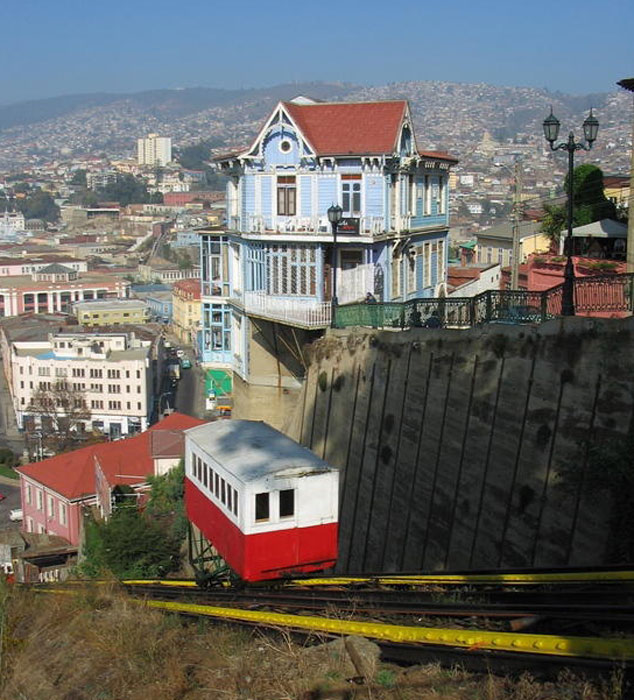
Next we went to the former home of Pablo Neruda, a Nobel Laureate and statesman.
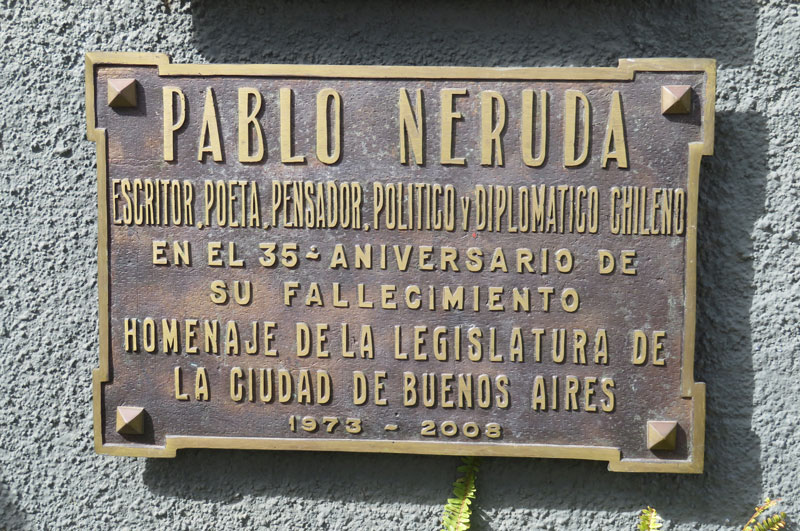
It was an unusual house.
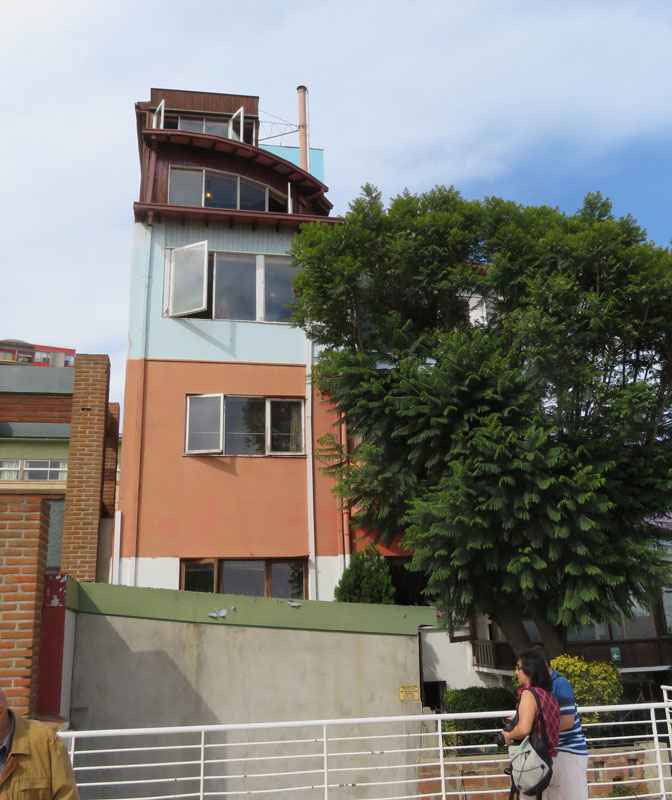
After the museum, we headed for a restaurant for a lunch snack. To get there, we had to taken another funicular, the Reina Victoria Lift (note that the offical name is a "lift" and not a funicular). This one was almost straight up, but was in better condition than the Artilleria Funicular.
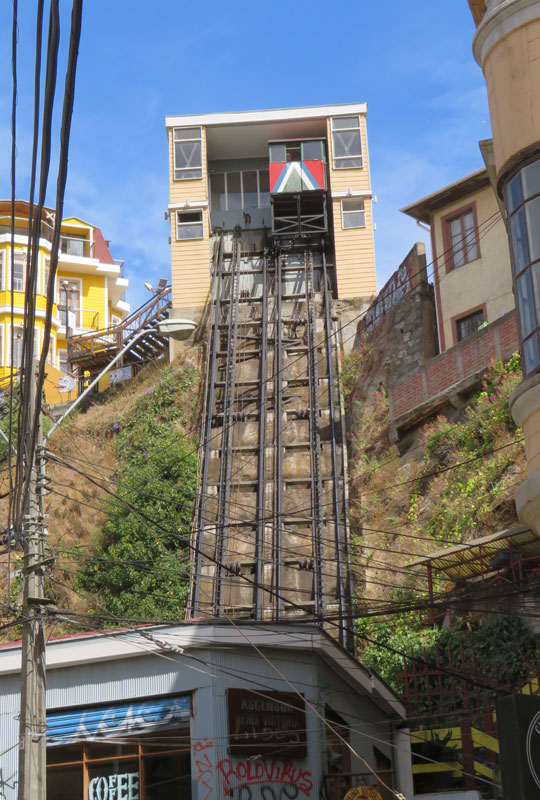

Looking down from the top.
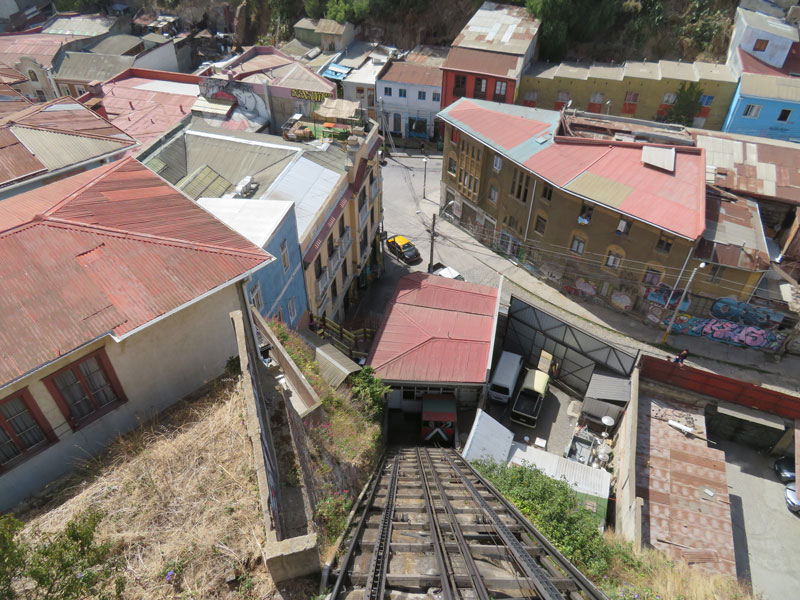
We walked to the restaurant.
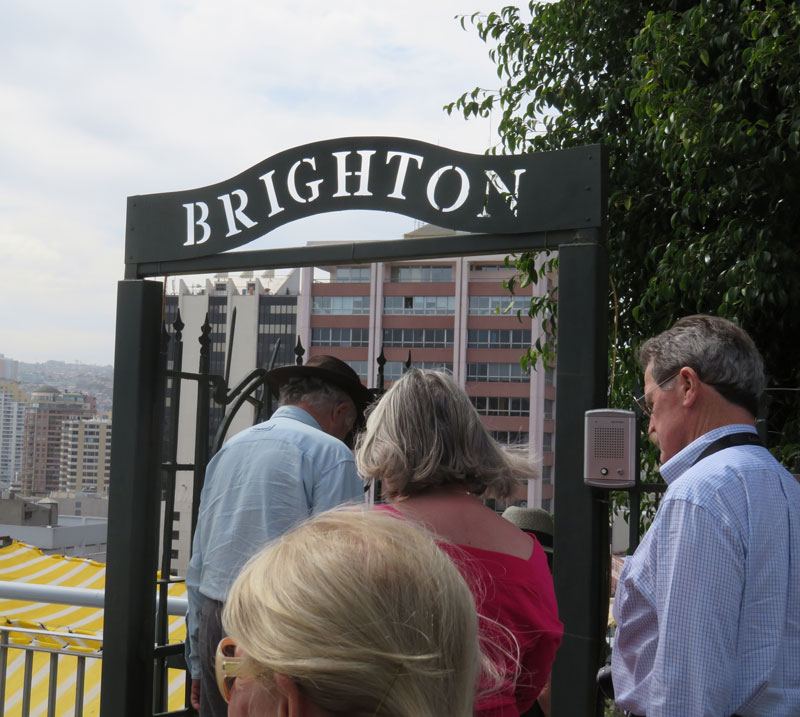
We had a Pisco sour and an oversized empanada. Unfortunately, the empanada was not very good - it was too doughy and the filling was not very tasty.
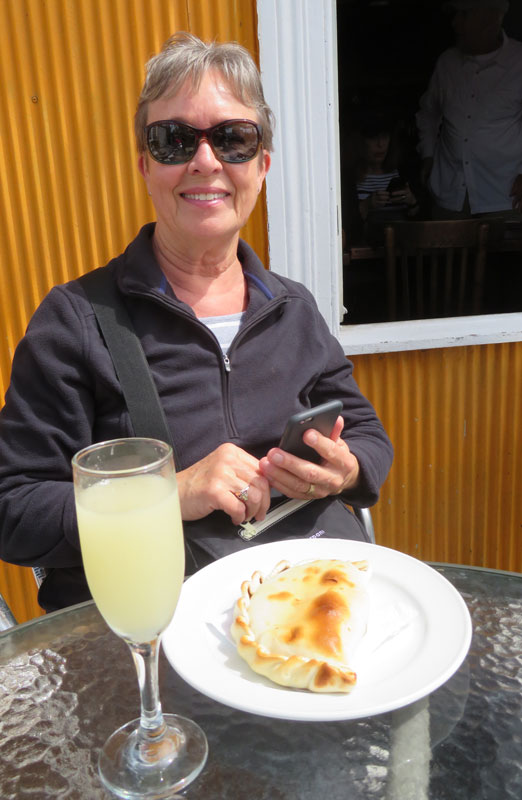
After lunch we boarded the bus and returned to the boat. That evening, we had dinner with friends in the Italian Restaurant (Sette Mari) on board.
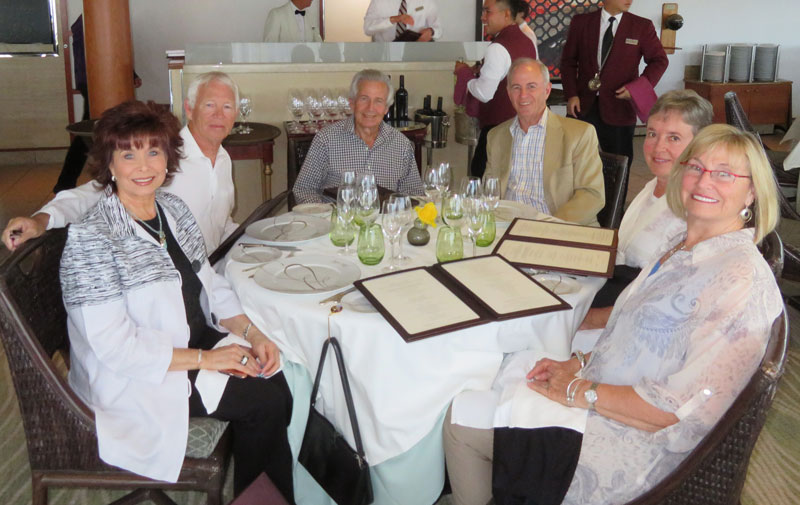
+++++++++++++++++++++++++++++++++++++++++++++++++
2/11/2017 (Saturday) Today was an at-sea day and we mostly just laid around. Tomorrow, we arrive at Puerto Montt.